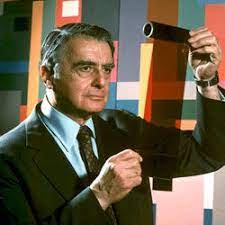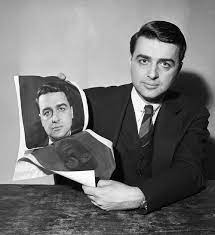
Photographers
Edward Herbert Land
1909 — 1991
November 26, 1848, marks a major day in the history of photography as American Edward Land introduced his Model 95 camera, which produced sepia-coloured prints in about one minute. It was the achievement of his efforts between 1943 and 1947 to create self-developing photography.
Land called his company Polaroid: Polar, taken from the root of polarizer and odium, which means to resemble. The camera was a major development for Land, following many successful efforts in developing a wide range of products during WWII. This included a 3D movie system, creating Vectographs that could be used with polarised glasses to give a realistic reproduction of terrain.

The instant photography of Polaroid cameras is made possible by a chemical reaction under the surface of the silver compounds on the negatives. Each Polaroid photo comprises: A light-sensitive negative – a film base coated with layers of silver halide grains, image dyes and inter-layers. A transparent cover sheet exposes the image to the negative and keeps all the chemicals safely inside the film.
Over the course of his career, Land earned 535 patents. He died on March 1, 1991, in Cambridge, Massachusetts.
Last Updated on: 2024-02-28
